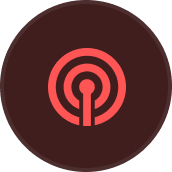 There has been a lot of emphasis on dietary fiber and its health promoting benefits over the past ten years or so. Various types of fiber have hit the market; all claiming to keep us healthy and regular by promoting… um, how can I put it?
There has been a lot of emphasis on dietary fiber and its health promoting benefits over the past ten years or so. Various types of fiber have hit the market; all claiming to keep us healthy and regular by promoting… um, how can I put it?
“Defecation” is the politest word I can come up with! Besides it previously being an untapped market, I reckon the fiber industry has taken hold because the typical diet, at least the typical American diet, includes so much processed foods that we aren’t getting our daily fiber requirements from whole foods like we used to. Fruits, vegetables, legumes, grains and nuts contain high amounts of fiber, and if eaten enough of, will provide the necessary 25 to 38 grams of daily fiber our body needs to function properly. Ah, but therein lies the catch! Since so many of us do not meet the requirement through our food, many people, including myself, have turned to dietary fiber supplementation to compensate our low-fiber diets.
Fiber isn’t rocket science, or a difficult topic to understand, but the reality is many of us are baffled and unsure of which type fiber to use. Between misleading advertisements and the countless types and brands available today, it’s real easy to become overwhelmed and make the wrong choice or just walk away all together. Not all fiber is the same, nor does it all work alike; so, in an attempt to take the guesswork out of using fiber supplements, I’ve taken a stab at simplifying the fiber mystery. Here goes…
There are two categories of fiber: soluble and insoluble, and all fibers fit into one of these two groups. Soluble fiber is fiber that dissolves in liquid; has no color, taste, odor or aftertaste. You can literally mix some in a glass of water and not even know it’s there. Insoluble fiber is fiber that doesn’t dissolve or break down. These characteristics make it easy to distinguish between the two types. The two fibers are completely different, and perform totally separate and distinct functions in the body.
Soluble fiber is valued for its ability to lower LDL (bad) cholesterol and prevent blood sugar from spiking. The fiber binds with fatty acids, which reduces cholesterol, and slows digestion so sugar is released more slowly into the blood stream. Soluble fiber typically gels when it reaches our digestive track, which adds to its ability to make us feel full. This type of fiber is very beneficial for diabetics or anyone interested in controlling blood sugar and cholesterol. Despite some advertising, soluble fiber is not beneficial for bowel elimination. Today, there are many brands and sources of soluble fiber on store shelves – all doing pretty much the same thing.
Insoluble fiber or roughage comes from plant material the body can not digest; therefore it has no nutritional value or calories. Its purpose is to move waste through the colon, promote the growth of healthy bacteria, which boosts immune function, and control the ph levels in the intestines. Insoluble fiber bulks up the stool and helps prevent constipation. Correcting constipation will not only make you feel better, but can do things like clear up acne prone skin by removing toxins from the body. Wheat and oat bran, consisting of the kernel’s hard outer layer, were two of the earlier, most popular insoluble fibers, but today’s market has expanded to include many other options.
Many supplemental fibers, like psyllium, contain both soluble and insoluble fiber – the way nature intended. Our intake of fiber should include fiber from both categories. Eating high-fiber whole foods is the best way to get what we need, since in addition to fiber, we also get other valuable plant compounds; however, choosing a fiber supplement which contains both soluble and insoluble fiber is a great second choice.
Fiber helps control weight gain and is beneficial for weight loss, also. Because all fiber is filling, it keeps us feeling full longer, which can prevent us from overeating. Starting your day with fiber sets the stage for eating less throughout the day. Adding fiber to a protein shake or eating a fiber cereal are two simple and tasty ways of meeting the daily fiber requirements, especially if you’re limiting calories. Including fiber in every meal and snack will make weight management much easier.
When taking certain fiber supplements, it’s important to increase your water intake. Insoluble fibers typically absorb water and swell, which is how they enlarge the stool. Inadequate water consumption can cause constipation, so additional water should be consumed.
One unfortunate reality of fiber can be flatulence or gas. Ask my wife! Often, this is a sign too much is being consumed. Regardless of the type fiber you use, it’s safest to start out with a small amount and gradually increase the dose. Giving your body time to adjust to fiber should help limit gas. If gas persists, switch fiber products until you find one that agrees with you.
Medications and nutritional supplements should not be taken at the same time as fiber, since fiber can easily interfere with their absorption. Some fibers are of more concern than others, so speak with your pharmacist or doctor about how much time should be in between taking the two. Fiber in food should not cause a problem with absorption, provided the medication and vitamin supplement can be taken with food.
The following chart includes the different types of fiber, their sources and benefits
| Types of Fiber | Soluble or Insoluble | Sources | Health Benefits |
| Cellulose,some hemicellulose | Insoluble | Naturally found in nuts, whole wheat, whole grains, bran, seeds, edible brown rice, skins of produce. | “Nature’s laxative”: Reduces constipation, lowers risk of diverticulitis, can help with weight loss. |
| Inulin oligofructose | Soluble | Extracted from onions and byproducts of sugar production from beets or chicory root. Added to processed foods to increase fiber. | May increase beneficial bacteria in the gut as prebiotic and enhance immune function. |
| Lignin | Insoluble | Found naturally in flax, rye, some vegetables. | Benefits heart health and possibly immune function. |
| Mucilage, beta-glucans | Soluble | Naturally found in oats, oat bran, beans, peas, barley, flaxseed, berries, soybeans, bananas, oranges, apples, carrots. | Helps lower bad LDL cholesterol,reduces risk of coronary heart disease and type 2 diabetes. |
| Pectin and gums | Soluble (some pectins can be insoluble) | Naturally found in fruits, berries, and seeds. Also extracted from citrus peel and other plants boost fiber in processed foods. | Slows the passage of food through the intestinal GI tract, helps lower blood cholesterol. |
| Polydextrose polyols | Soluble | Added to processed foods as a bulking agent and sugar substitute. Made from dextrose, sorbitol, and citric acid. | Adds bulk to stools, helps prevent constipation. |
| Psyllium | Soluble | Extracted from rushed seeds or husks of plantago ovata plant. Used in supplements, fiber drinks, and added to foods. | Helps lower cholesterol and prevent constipation. |
| Resistant starch | Soluble | Starch in plant cell walls naturally found in unripened bananas, oatmeal, and legumes. Also extracted and added to processed foods to increase fiber. | Helps weight management by increasing fullness. |
| Wheat dextrin | Soluble | Extracted from wheat starch, and widely used to add fiber in processed foods. | Helps lower cholesterol (LDL and total cholesterol), reduces risk of coronary heart disease and type 2 diabetes. |
As you can see, there are numerous fibers available, so if a particular fiber doesn’t agree with you, try another one. Science now knows how essential fiber is to our overall health. Count your daily intake from food, and if you fall short, consider adding a supplemental fiber. Your body will love you for it!












